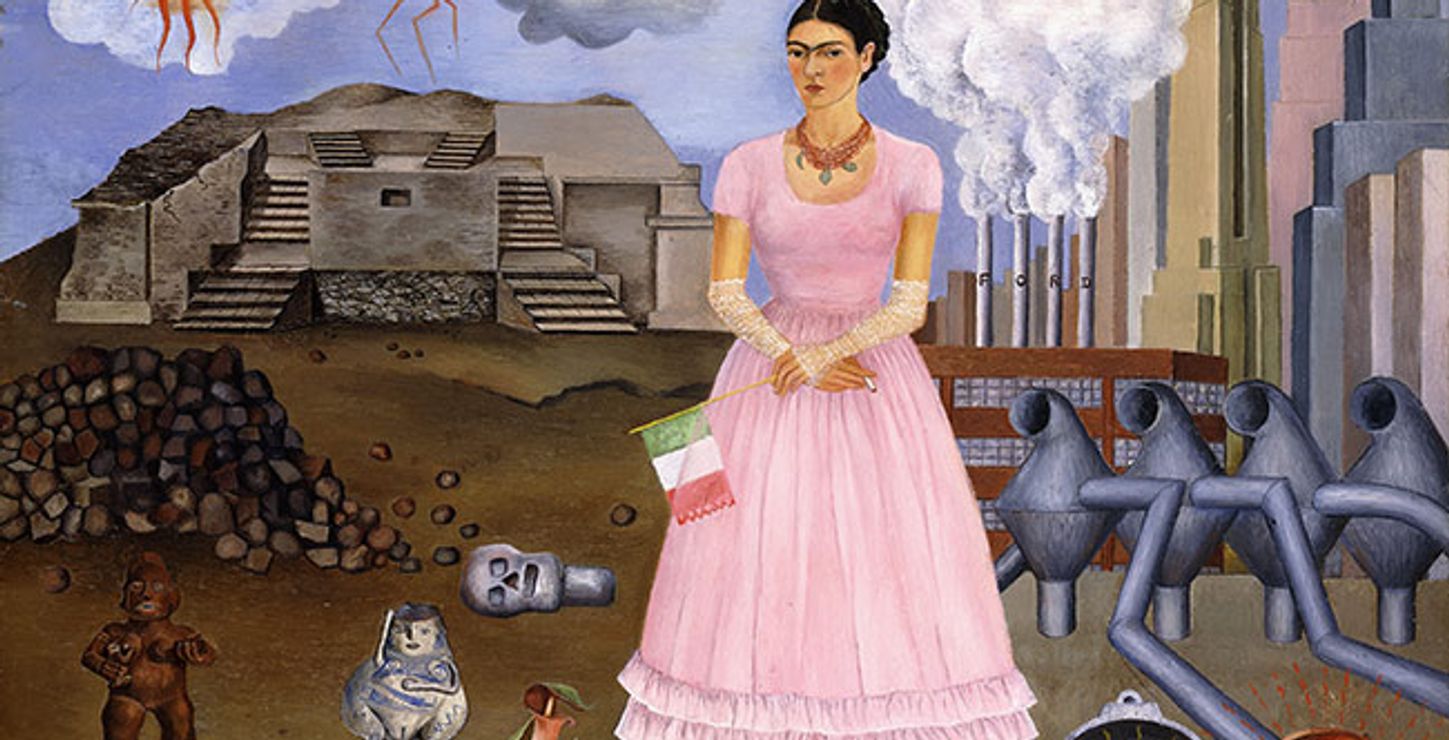Dorrance Special Exhibition Galleries, First Floor
Main Building

Self-Portrait on the Border Line between Mexico and the United States (Autorretrato en la frontera entre México y los Estados Unidos), 1932 Frida Kahlo, Mexican, 1907–1954 Colección Maria y Manuel Reyero, New York © 2016 Banco de México Diego Rivera Frida Kahlo Museums Trust, Mexico, D.F.
From the start of the Mexican Revolution in 1910 to the aftermath of World War II, artists and intellectuals in Mexico were at the center of a great debate about their country's destiny. The exhibition tells the story of this exhilarating period through a remarkable range of images, from masterpieces by Diego Rivera, José Clemente Orozco, David Alfaro Siqueiros, Frida Kahlo, and Rufino Tamayo to transfixing works by their contemporaries Dr. Atl, María Izquierdo, Roberto Montenegro, Carlos Mérida, Manuel Álvarez Bravo, and many others.
Paint the Revolution offers a deep look at the forces that shaped modern art in Mexico, the progress of which was closely watched around the world. The exhibition takes its name from an impassioned essay by American novelist John Dos Passos, who saw Mexico's revolutionary murals during a visit to Mexico City in 1926–27.
In addition to featuring portable murals, easel paintings, photographs, prints, books, and broadsheets, the exhibition displays murals by the Tres grandes (Diego Rivera, José Clemente Orozco, and David Alfaro Siqueiros) in digital form.
The Philadelphia Museum of Art presents this landmark exhibition in partnership with the Museo del Palacio de Bellas Artes in Mexico City. Drawn from US and Mexican collections, it is the most comprehensive exhibition of Mexican modernism to be shown in the United States in more than seven decades.
This exhibition will travel to the Museo del Palacio de Bellas Artes, Mexico City, in 2017.
The museum’s collections of Mexican art are among the most important in the United States. Included among its renowned holdings are twentieth-century paintings and sculpture by Diego Rivera, David Alfaro Siqueiros, Rufino Tamayo, Julio Castellanos, and others.
Explore more
The museum also houses a significant number of works on paper by Mexican artists, including an extensive collection of prints.
Explore more
Dorrance Special Exhibition Galleries, First Floor
Main Building
Paint the Revolution is co-organized by the Philadelphia Museum of Art and the Museo del Palacio de Bellas Artes, Mexico City.

Bank of America is the National Sponsor of Paint the Revolution.

In Philadelphia, the exhibition is made possible by the National Endowment for the Humanities, the National Endowment for the Arts, The Women’s Committee of the Philadelphia Museum of Art, the Robert J. Kleberg, Jr. and Helen C. Kleberg Foundation, Christie’s, Bimbo Bakeries USA, The Mexican Society of Philadelphia in honor of Henry Clifford, and The Annenberg Foundation Fund for Major Exhibitions, with additional support from Barbara B. and Theodore R. Aronson, Martha Hamilton Morris and I. Wistar Morris III, G. Theodore and Nancie Burkett, an anonymous donor, and other generous donors.
The accompanying catalogue in English and Spanish is made possible by the Mary Street Jenkins Foundation. The English-language edition is additionally supported by the Davenport Family Foundation, The Andrew W. Mellon Fund for Scholarly Publications at the Philadelphia Museum of Art, and by Furthermore: a program of the J.M. Kaplan Fund.
Exhibition education programs generously supported by PECO.
Exhibition travel courtesy of American Airlines.
The museum gratefully acknowledges media partner Time Out.
The museum recognizes community outreach partners the Consulate of Mexico in Philadelphia and the Mexican Cultural Center.





Matthew Affron, The Muriel and Philip Berman Curator of Modern Art, and Mark A. Castro, Project Assistant Curator, European Painting, both of the Philadelphia Museum of Art; Dafne Cruz Porchini, Postdoctoral Researcher, Colegio de México, Mexico City; and Renato González Mello, Director of the Institute for Aesthetic Investigation, National Autonomous University of Mexico
Check out the variety of events offered by this program, for members and the public alike.